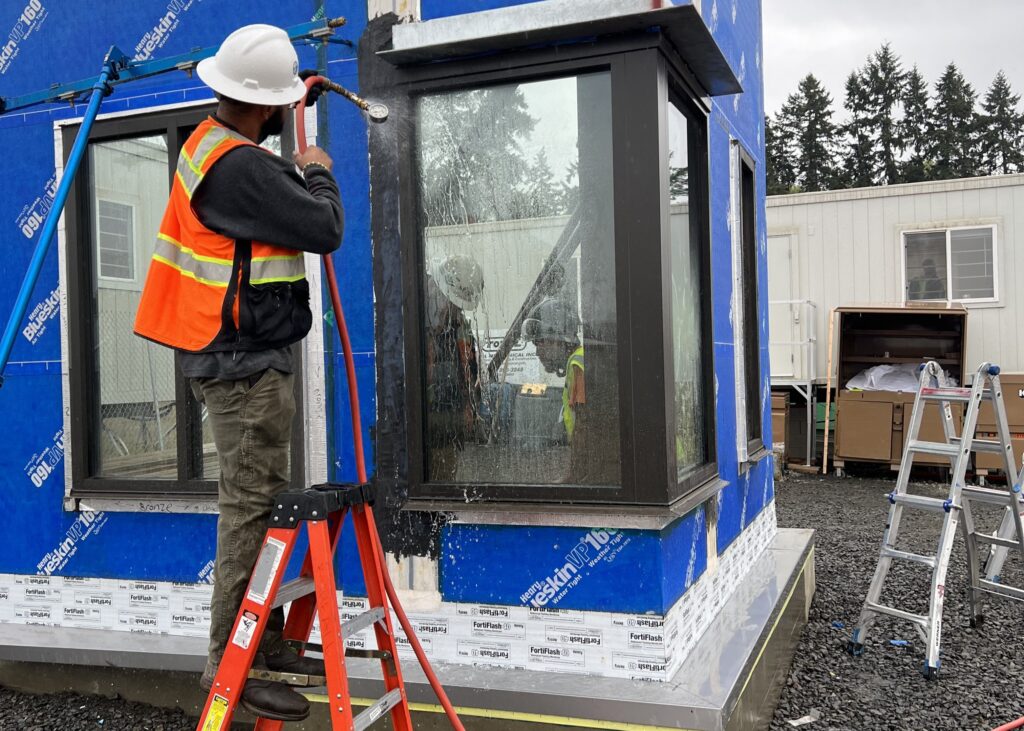
In the ever-evolving landscape of sustainable building design and energy efficiency, existing buildings present a unique opportunity. While new construction can incorporate the latest technologies, retrofitting existing buildings requires a thorough approach to optimize performance without compromising functionality or aesthetics. One of the most effective strategies is envelope testing.
Envelope testing focuses on assessing and improving the building envelope, this is the physical barrier between the interior and exterior environments. The envelope includes walls, roofs, windows, doors, and other elements that separate conditioned spaces from the outside. By evaluating and enhancing the performance of the building envelope, retrofits can significantly reduce energy consumption, improve indoor comfort, while also extending the lifespan of the building structure.
Understanding the Importance of Envelope Testing
The building envelope plays a crucial role in regulating temperature, humidity, and air quality within a building. In existing structures, the envelope may have deteriorated over time or may not be designed to meet modern energy efficiency standards. As a result, these buildings often experience a variety of issues such as air leaks, thermal bridging, moisture infiltration, and inadequate insulation, all of which can contribute to energy waste and decreased occupant comfort.
Envelope testing addresses these challenges by identifying inefficiencies in the building envelope. By conducting a comprehensive audit using diagnostic tools such as infrared thermography, blower door tests, and smoke pencils, the areas of air leakage, thermal loss, and moisture intrusion can be identified. The data collected from the audit serves as the foundation for developing targeted retrofit strategies that address the specific deficiencies identified while maximizing energy savings and performance improvements.
Strategies for Envelope Testing in Retrofits
- Air Sealing: One of the primary objectives of envelope testing is to identify and seal air leaks throughout the building envelope. This may involve caulking gaps around windows and doors, sealing penetrations in walls and roofs, and addressing any other sources of uncontrolled airflow. By minimizing air leakage, retrofits can reduce energy loss, improve indoor air quality, while also enhancing the overall occupant comfort.
- Insulation Upgrades: Inadequate insulation is a common issue within existing buildings, leading to thermal discomfort and excessive energy consumption. Envelope testing helps to identify areas where insulation levels are insufficient or improperly installed. Retrofit strategies can include adding insulation to walls, roofs, and floors, as well as upgrading windows and doors to high-performance models with better thermal resistance.
- Window and Door Replacement: Windows and doors are critical components of the building envelope, affecting both the energy performance and occupant comfort. Envelope testing can identify areas of air infiltration, heat loss, and condensation around the openings. Retrofit options may include replacing old, inefficient windows and doors with energy-efficient models featuring double or triple glazing, low-emissivity coatings, and improved weather sealing.
- Moisture Management: Moisture infiltration can compromise the integrity of the building envelope, leading to mold growth, structural damage, and indoor air quality issues. Envelope testing identifies areas of moisture intrusion, such as leaks in roofs, walls, and foundations. Retrofit strategies may include repairing damaged materials, improving drainage systems, and installing vapor barriers to prevent moisture buildup.
- Thermal Bridging Mitigation: Thermal bridging occurs when conductive materials create pathways for heat to bypass insulation, resulting in centralized areas of heat loss or gain. Envelope testing identifies areas where thermal bridging is occurring, such as metal framing, concrete balconies, and structural connections. Retrofit solutions include adding thermal breaks, insulating around structural elements, and using high-performance building materials with lower thermal conductivity.
Benefits of Envelope Testing for Retrofits
- Energy Savings: By improving the thermal performance of the building envelope, retrofits can significantly reduce the facilities heating and cooling loads, resulting in lower energy bills and reduced carbon emissions.
- Improved Comfort: Enhanced insulation, air sealing, and moisture management contribute to a more comfortable indoor environment for occupants with fewer drafts, more consistent temperatures, and improved humidity control.
- Extended Lifespan: Retrofitting the building envelope not only improves energy efficiency but also protects the structure from moisture damage, thermal stress, and other factors that can degrade building materials over time.
- Enhanced Property Value: Buildings with high-performance envelopes are more attractive to tenants, investors, and potential buyers, leading to increased property value in addition to marketability.
Envelope testing is a critical component of retrofit projects aimed at improving the performance and extending the lifespan of existing buildings. By identifying and addressing weaknesses in the building envelope, retrofits can achieve significant energy savings, enhance indoor comfort, and prolong the lifespan of the structure. With careful planning, specific facility strategies, and the right expertise, envelope testing can transform older buildings into high-performance, sustainable assets for years to come.
